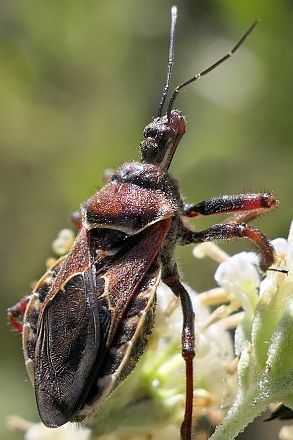
Apiomerus spissipes (bee assassin)
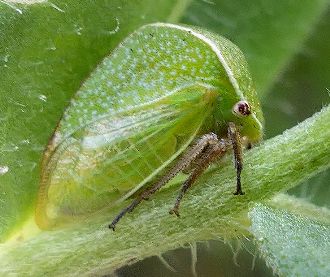
Ceresa sp. (treehopper)
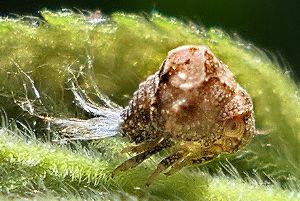
Acanalonia conica (planthopper nymph)

Gratiana pallidula (eggplant tortoise beetle larva)
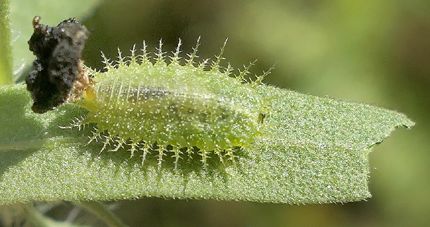
Cassida relicta (tortoise beetle larva)
| While this larva looks almost the same as that in the previous photo, this one is feeding on Gaillardia, while the other is on Silver-leaf Nightshade. |
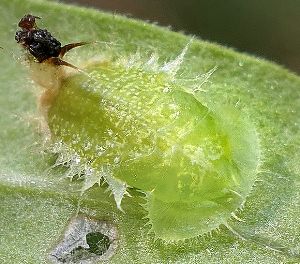
Cassida relicta (tortoise beetle pupa)
| This species is uncommon and, although I'd seen a photo of an adult from the same flower patch, in order to confirm the identification of the larva, I collected it. Pupation occurred on April 28. |
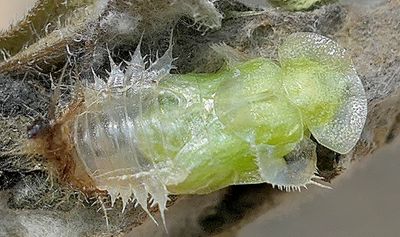
Cassida relicta (tortoise beetle eclosing)
| On May 6, the beetle eclosed (emerged from its pupa shell). The next photo was taken the following day, when the markings were more apparent. All images I've seen of this species had a pink flush to the pronotum that this one lacks. I am still observing it to see if it eventually changes color. |

Cassida relicta (tortoise beetle)
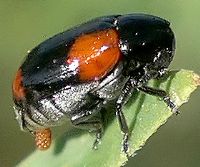
Babia quadriguttata (leaf beetle)

Smicronyx quadrifer (weevils)
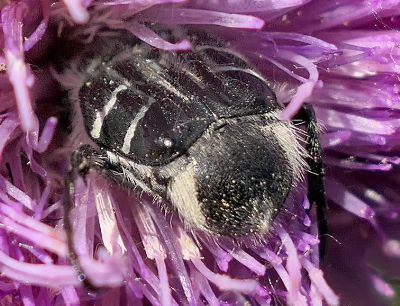
Trichiotinus texanus (Texas flower scarab)
| As this beetle feeds with its head buried in the thistle, a position they frequently assume, the shape of its rear end gives the appearance of a hairy bee face, complete with white eyes. |
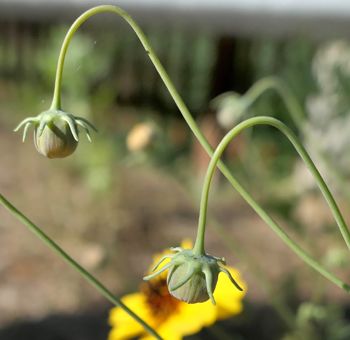
Thelesperma filifolium (greenthread)
| Some of our yellow composites (family Asteraceae) are infamous for their identification difficulty. The distinctive nodding buds of this one, though, are a reliable character. This is the host plant for Dainty Sulphur caterpillars. |
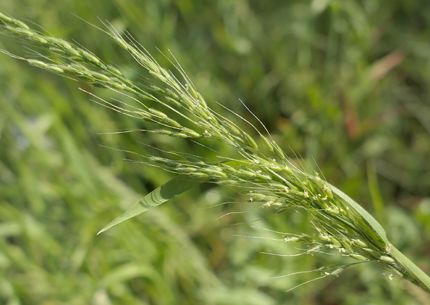
Limnodea arkansana (Ozark grass)
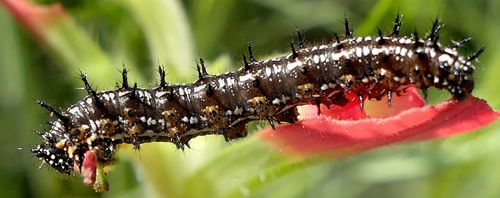
Junonia coenia (buckeye larva)
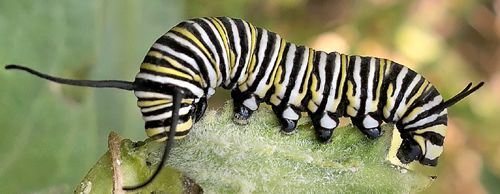
Danaus plexippus (monarch larva)
| The two caterpillars shown above illustrate a common feature of many such larvae: heads and rear ends that look similar. In this case, the heads are both at left. Such ambiguous morphology can be confounding to parasitoids that must target a specific part of their victim for oviposition. |
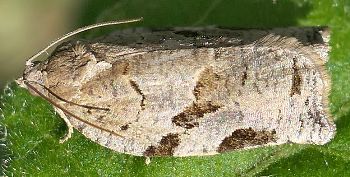
Archips grisea (gray archips moth, female)
| This species exhibits rather obvious sexual dimorphism. A male, which is smaller, has stronger contrasting markings, and has a folded edge on its wing, is shown on the previous page (images from our yard). |
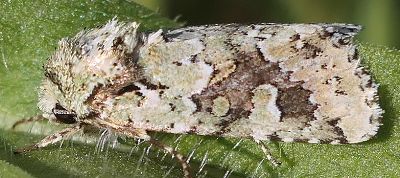
Lacinipolia laudabilis (laudable arches)
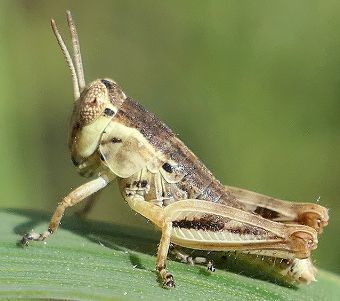
Melanoplus ponderosus (ponderous grasshopper nymph)
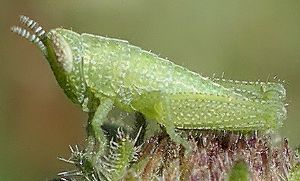
Hesperotettix speciosus (showy grasshopper nymph)
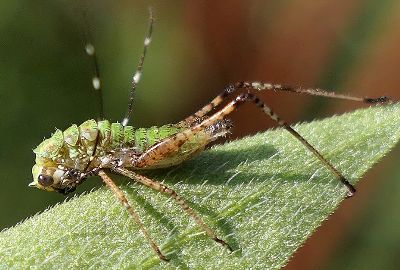
Scudderia furcata (fork-tailed bush katydid nymph molting)
| Something went wrong for this katydid and it died in the process of molting. Changing weather can often be the cause of such fatalities. |
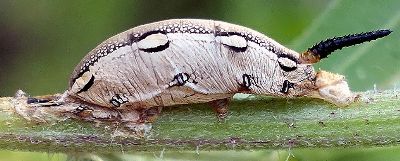
Aleiodes sp. & Hyles lineata (braconid wasp pupa in
white-lined sphinx caterpillar mummy)

![]()